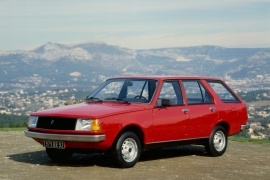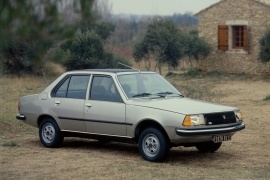RENAULT 18 Models/Series Timeline, Specifications & Photos
First production year: 1978
Engines: Gasoline, Diesel
Body style: Hatchback
Renault introduced the 18 in the late '70s as a replacement for the 12 range and made the car available in two bodywork versions: sedan and station wagon, also known as Break or Estate.
The French carmaker made the 18 on the same platform as the 12, while the rest of the car was developed in just 18 months. Strangely, though, even if the 18 was supposed to replace the 12, they were built in parallel for two years, until 1980.
For the station wagon version, the carmaker adopted the same front fascia as on the four-door sedan, with rectangular headlights and corner-mounted turn signals. Moreover, most bodywork panels were similar for both versions up to the C-pillars. Even the doors were identical. On the other hand, the long-roof version featured a third window behind the rear doors. At the back, its raked-forward tailgate was flanked by the taillights. One reason why Renault did that was that it tried to sell the car on the U.S. market, where the stoplights were supposed to be mounted on fixed body panels. The other reason was that it was cheaper to build it that way.
The interior looked just as mundane as on the sedan sibling, albeit it featured a folding rear set. The system was carried over from the Renault 12 and made room for a completely flat floor. Thus, the trunk could have been expanded from the regular 17 cu. ft. (481 liters) to an impressive (for those times) 55 cu. ft. (1,557 liters).
Under the hood, the carmaker installed some of the older engines carried over from the 12 range but added a few new options, such as a 1.7-liter, carbureted inline-four. Last but not least, it introduced a fuel-efficient diesel engine, which was unheard of in its class.
Introduced to the market in late 1977 and showed at the Geneva Motor Show in the spring of 1978, the Renault 18 was a little more than a re-bodied Renault 12, a car that was state of the art in 1969.
The Renault 18 might be considered the first World Car produced by Renault since it was manufactured or assembled in 10 countries around the world. Before that, it was the Renault 12 that was built in several countries, including in communist Eastern Europe. The 18 shared numerous parts with the Renault 12, but only in the first few years of production.
The square headlights, the grille with horizontal slats, and the compact, three-box, bodywork were considered modern for the time of its appearance. The three-studs wheels though were not. But that was changed in 1980 for the turbocharged version and, since 1983, for the whole Renault 18 range. The door handles were flush to the bodywork and the car was available with an option for alloy wheels.
Inside, the vehicle offered room for four passengers and it featured options such as air-conditioning, power windows and locks, and even a radio-cassette player. Later on, 3-speed automatic transmission was offered for specific models.
Renault 18 was exported in the U.S. and re-engineered by the AMC company for the U.S. and Canadian market with bigger bumpers and fuel injected engines. The basic models featured front disc-brakes and drums in the rear, but for specific models there were four-wheel disc-brakes.
The car was produced also in Argentina until the mid-'90s, while in Europe it was withdrawn from the market in 1989.

